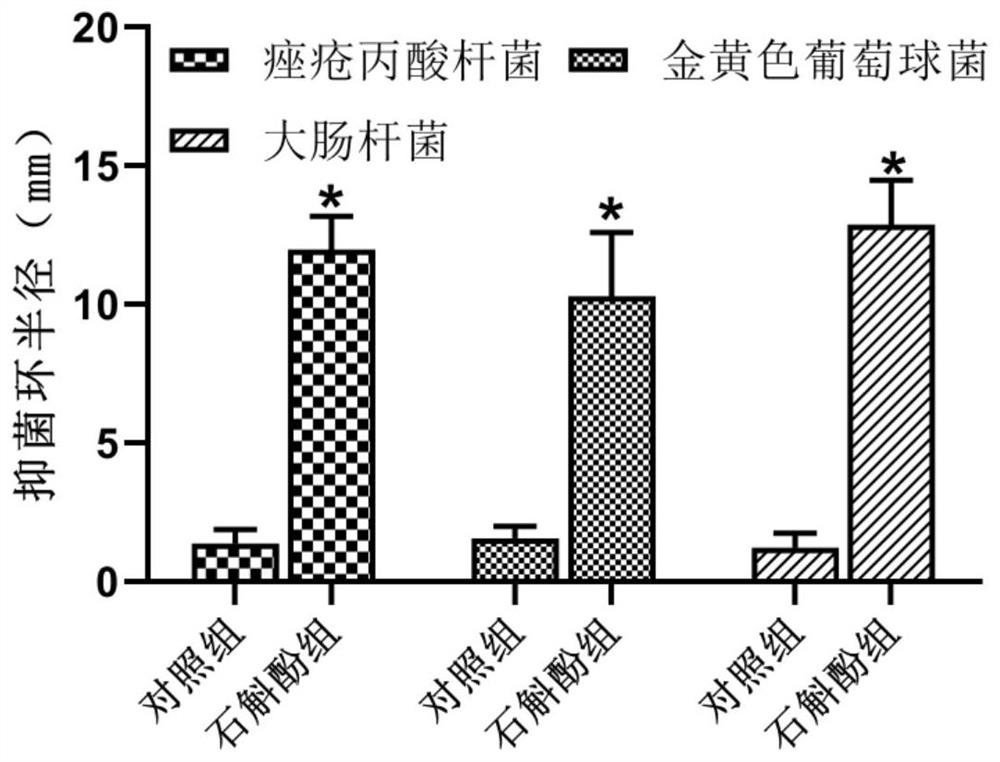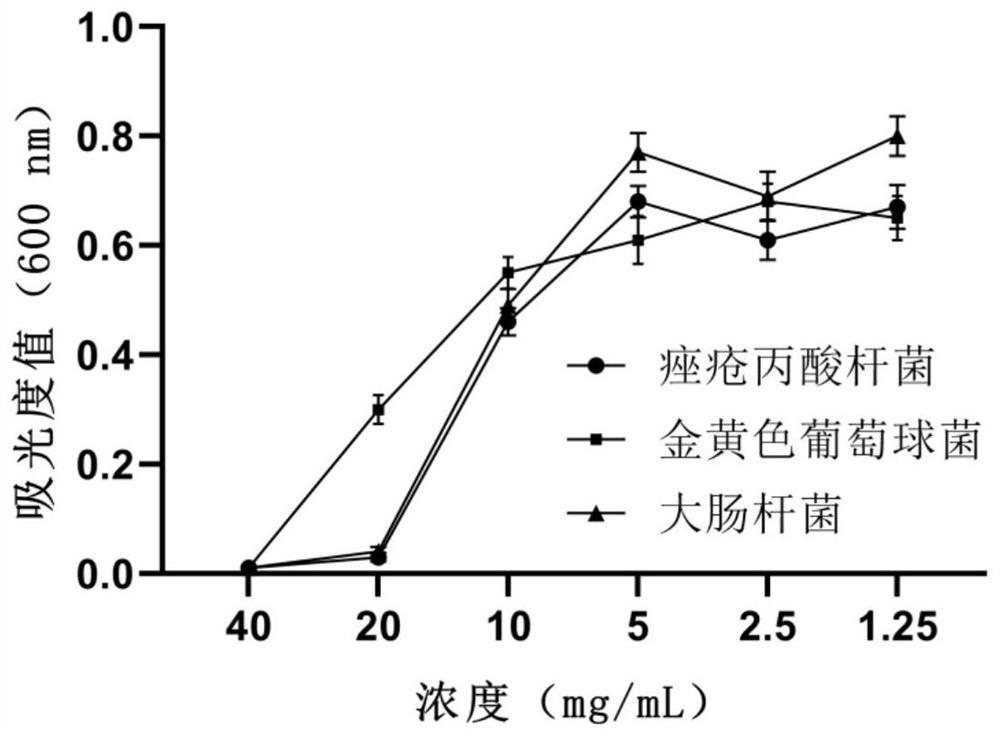Medical application of gigantol and drug for resisting propionibacterium acnes
A technology of Propionibacterium acnes and dendrobium, which is applied in the field of medicine and biology, and can solve problems such as irritation, teratogenic risk, and easy drug resistance
- Summary
- Abstract
- Description
- Claims
- Application Information
AI Technical Summary
Problems solved by technology
Method used
Image
Examples
Embodiment 1
[0015] Embodiment 1: Antibacterial circle experiment.
[0016] Drug preparation: dissolve dendrobium phenol with DMSO, and prepare a mother solution with a concentration of 160 mg / mL. During the experiment, the mother liquor of dendrobium was diluted 4 times with sterile liquid medium to prepare the experimental concentration of dendrobium (40 mg / mL).
[0017] Experimental method: Determination by agar diffusion method, take a 12 cm diameter plate, add 10 mL of medium. After condensation, use a sterile cotton swab to dip in different bacterial solutions (Propionibacterium acnes, Staphylococcus aureus or Escherichia coli) to be evenly spread on the surface of the culture medium, and let it dry at room temperature for 3-5 minutes. A sterile Oxford cup with a diameter of 6 mm was placed on an agar plate, and 50 μL of dendrobium at a concentration of 40 mg / mL was added to the cup. The control well was DMSO (25%), and three replicate controls were set for each condition. The diam...
Embodiment 2
[0019] Embodiment 2: Determination of minimum inhibitory concentration (MIC).
[0020] Experimental method: use the liquid dilution method to measure. In the 96-well cell culture plate, set up medium control wells, bacterial liquid control wells (Propionibacterium acnes, Staphylococcus aureus or Escherichia coli), and dendrobium liquid control wells. Equally dilute dendrobium with liquid medium (concentration: 40 mg / mL-1.25 mg / mL), add 100 μL of diluted dendrobium liquid and 10 μL of test bacteria solution (Propionibacterium acnes, golden yellow Staphylococcus or Escherichia coli), after culturing at 37°C for 24 h, the absorbance (OD) value at 600 nm wavelength of each well was detected by MTT method. The minimum inhibitory concentration (MIC) was defined as the critical drug concentration before the OD value suddenly increased.
[0021] Experimental results: as attached figure 2 As shown, the MICs of dendrobium phenol to P. acnes and Escherichia coli were both 10 mg / mL, an...
PUM
 Login to View More
Login to View More Abstract
Description
Claims
Application Information
 Login to View More
Login to View More - R&D
- Intellectual Property
- Life Sciences
- Materials
- Tech Scout
- Unparalleled Data Quality
- Higher Quality Content
- 60% Fewer Hallucinations
Browse by: Latest US Patents, China's latest patents, Technical Efficacy Thesaurus, Application Domain, Technology Topic, Popular Technical Reports.
© 2025 PatSnap. All rights reserved.Legal|Privacy policy|Modern Slavery Act Transparency Statement|Sitemap|About US| Contact US: help@patsnap.com


